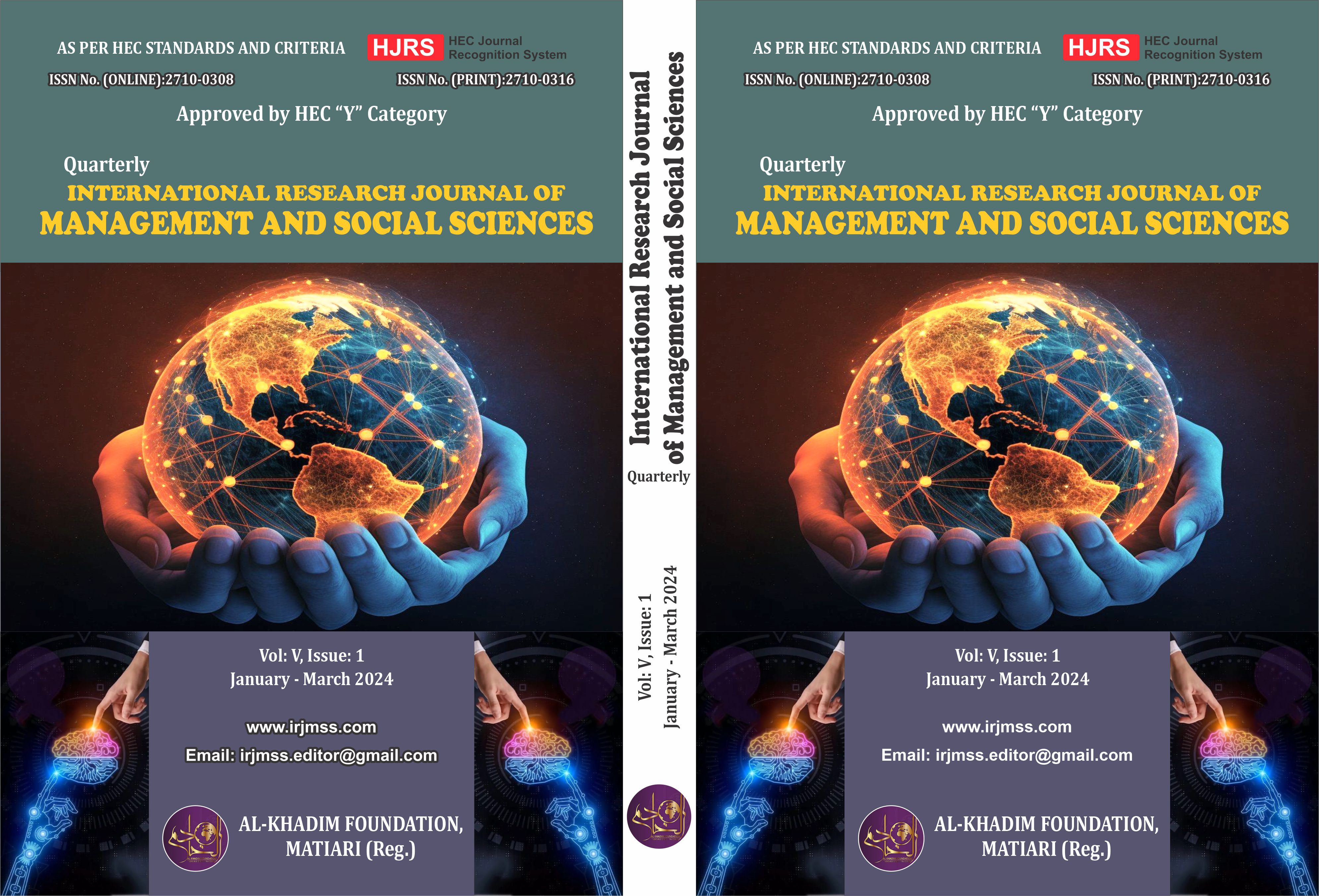The Adverse Impact of Ribā on Society
Keywords:
Impact of Ribā on society, Lawful, Unlawful (Haram), Injunctions, Ribā ingredientsAbstract
Ribā, commonly understood as usury or interest, has been a subject of significant debate and scrutiny within Islamic finance and broader societal contexts. This paper delves into the adverse impact of Ribā on society from multiple perspectives, encompassing economic, social, and ethical dimensions. Economically, Ribā fosters inequality by concentrating wealth in the hands of the lenders while burdening borrowers with perpetual debt. The interest-based financial system incentivizes profit over productivity, leading to speculative bubbles, financial crises, and widening wealth gaps. Moreover, Ribā discourages entrepreneurship and innovation, as individuals may opt for interest-based financing rather than seeking Sharia-compliant alternatives. Socially, Ribā exacerbates poverty and marginalization, particularly among vulnerable populations. High interest rates on loans and credit exacerbate the cycle of poverty, trapping individuals and communities in perpetual debt. This phenomenon disproportionately affects low-income households, perpetuating socio-economic disparities and hindering social mobility. Furthermore, the commodification of money through interest-based transactions undermines the values of solidarity and cooperation, eroding social cohesion and trust within communities. Ethically, Ribā contradicts the principles of fairness, justice, and compassion inherent in Islamic teachings. It exploits the financial vulnerability of individuals for personal gain, violating the principle of mutual benefit and harming the common good. The pursuit of excessive profits through interest contradicts the ethical imperative of responsible stewardship and sustainable development. The adverse impact of Ribā on society is multifaceted, encompassing economic inequality, social injustice, and ethical degradation. Addressing these challenges requires a holistic approach that promotes financial inclusion, equitable wealth distribution, and ethical finance practices. By adhering to the principles of justice, compassion, and mutual cooperation, societies can mitigate the adverse effects of Ribā and foster inclusive prosperity for all members.
References
Ahmad, A. (2018). "The Impact of Riba (Interest) on Socio-Economic Condition: An Islamic Perspective." Al-Ijtihad: Journal of Islamic Studies, 2(2), 163-176.
Akhtar, M. (2015). "Riba and Islamic Banking: A Conceptual Analysis." Journal of Islamic Economics, Banking and Finance, 11(1), 53-69.
Al-Jaza ‘iri, (1976), Minhaj al- Muslim. al-Madinah, Dar al-‘Umar b. al-Khattab.
Ali, S. S., & Shah, S. A. (2017). "Interest (Riba) and Its Impact on Economy and Society: A Critical Analysis from Islamic Perspective." International Journal of Business and Social Science, 8(1), 149-158.
Alih bin Fauzan, (2001), Min Fiqh Al-Mu ‘amalat. Riydh: Dar Ashbiliyah.
El-Gamal, M. A. (2006). "Interest and the Paradox of Contemporary Islamic Law and Finance." Vanderbilt Law Review, 59(6), 1663-1749.
Hasan, Z. (2019). "Economic Impact of Riba (Interest) on Society and Its Solution in Islamic Banking Perspective." Humanities and Social Sciences Reviews, 7(4), 128-134.
Iqbal, M., & Molyneux, P. (2005). "Thirty Years of Islamic Banking: History, Performance and Prospects." Thunderbird International Business Review, 47(2), 127-147.
Khan, F. A. (2016). "Interest (Riba) and Its Effects on Economy and Society: The Case of Pakistan." International Journal of Economics, Commerce and Management, 4(10), 45-54.
Manzur, (1968), Lisan-al- ‘Arab. Beirut, Vol. 14.
Mirakhor, A., & Askari, H. (2013). "Islamic Economics and Finance: A New Institutional Economics Perspective." Islamic Economic Studies, 21(1), 1-33.
Muḥammad Munẓir Qahf (1997), Al-Iqtisad al-Islami. Kuwait: Dar al-Qalam.
Muḥammad b.’Abd al-Raḥman al-Shafi‘i. (1981), Rahmat al-Ummah fi ikhtilaf al-A immah. Matabi ‘i Qatar al-Wataniyyah.
Obaidullah, M. (2008). "Islamic Financial Services: Developments in the Global Financial Crisis." Thunderbird International Business Review, 50(5), 353-368.
Rahman, M. M., & Hossain, M. (2015). "The Concept of Riba and Islamic Banking." Journal of Business and Management, 17(9), 24-30.
Saeed, A. (2017). "Impact of Interest (Riba) on Society and Solution in the Light of Islam: A Case Study of Pakistan." Journal of Islamic Thought and Civilization, 7(1), 63-81.
Shaikh, S. A. (2005). "Riba, Interest and Islam: A Conceptual Appraisal." The Pakistan Development Review, 44(4), 883-898.
Siddiqi, M. N. (2002). "Islamic Banking and Finance in Theory and Practice: A Survey of State of the Art." Islamic Economic Studies, 9(2), 1-47.
Siddiqi, M. N. (2008). "Islamic Banking and Finance: What Have We Learnt and What Are the Challenges Ahead?" The European Journal of Finance, 14(7), 657-670.
Warde, I. (2010). "Islamic Finance in the Global Economy." Edinburgh University Press.
Abul A’la Mawdudi, (1967), The Meaning of the Qur’an. Vol.1. Lahore.
Abu al-Hasan al-Mardawi, (1956), al-Insaf. Vol.5, Cairo: Matba ‘ah al-Sunnah al-Muhammadiyyah.
Abu Hamid al-Ghazali, (2000), Ihya’ ‘Ulum al-Din. Vol.2, Beirut: al-Maktabah al Shariyah.
Ibn.Rushd al-Qurtubi, (1995), Bidayat al-Mujtahid Wa nihayat al-Muqtasid. Vol.3, Beirut.
Imran N.Hosein, (1996), The importance of the prohibition of Ribā in Islam. Malaysia: Ummavision Resources.
M. Umer Chapra, (1995), Towards a Just Monetary System. Leicester, UK.
Jonathan Morton, London W11(guardian.co.uk © Guardian News and Media Limited 2011) Edmundo Santiago, Upland, US.






